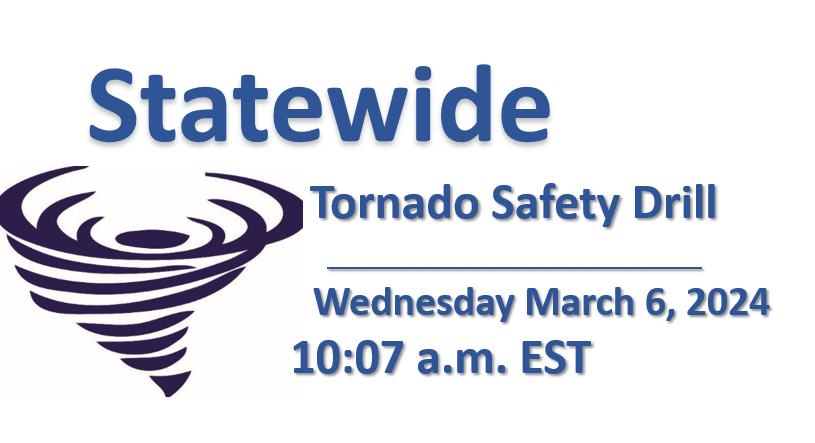
The Annual Kentucky Statewide Tornado Drill for 2024 will be conducted Wednesday, March 6 at 10:07 AM EST (9:07 AM CST). This will be a great opportunity to practice your tornado safety plan, whether you are at home, school, or work. If there is a threat of severe weather at the scheduled time, the drill will be postponed to a fair-weather day. Here are answers to a few questions that might be on your mind before, during, and after the drill.
Q: Will the Tornado Drill set off the Emergency Alert System?
A: Yes it will, including both NOAA Weather Radio, local TV and radio stations, and cable override. The one exception is in northern Kentucky and southeast Indiana, where the message will be sent as a Routine Weekly Test on NWR, per agreement with Cincinnati-area broadcasters.
Q: Will the Tornado Drill set off the Wireless Emergency Alert (WEA) on my mobile phone?
A: No. WEA will disregard the message because it is identified as a TEST. In a real Tornado Warning, WEA will recognize the “operational” code and activate as long as you don’t have your alerts turned off.
Q: Will the Tornado Drill set off the outdoor warning sirens?
A: The decision to activate sirens (or not) is made by the Director of each County Emergency Management Agency.
Q: Why not do the drill concurrently with the monthly siren test?
A: Different counties test their sirens at different times. For example, while Jefferson County tests their sirens at noon on the second Tuesday of each month, neighboring Oldham County tests theirs at 10:30 AM the same day. The Statewide Tornado Drill is a coordinated exercise.
Q: You said the Tornado Drill wouldn’t set off the cell phones, so why did my phone alert me anyway?
A: If you are set up to receive alerts through a third-party vendor, some of them may still push the message to your cell phone. Others might not.
Q: Why didn’t my Weather Radio go off?
A: There are several possibilities. We’ll address these individually…
Is it set to the correct channel and programmed correctly? Information on frequencies, coverage areas, and county codes can be found using the links listed at the bottom of the page.
Are you in northern Kentucky? The areas served by NWS Wilmington, OH would have received a Routine Weekly Test (instead of a test Tornado Warning), and your radio should at least be flashing that message.
Are you near a border between County Warning Areas, and listening to a transmitter that is run by a different office than the one that serves your county? If this is the case, your county may not have been included in the neighboring office’s test Tornado Warning, but just the office that serves your county. We do this with the drill so that each transmitter broadcasts the test message only once. However, rest assured that when an actual Tornado Warning is issued for your county, all transmitters that cover your county will broadcast it.
Q: Will there be an evening tornado drill?
A: Unfortunately, no there won’t. Activating the EAS isn’t something that we can do multiple times for a test/drill. But today is a good time to discuss what your tornado plan is at home, or wherever you happen to be in the evenings. And in the Louisville office, we will conduct our Tuesday evening Routine Weekly Test as usual, at 6 PM local time.
Q: How do I program my weather radio with a SAME code?
A: Find your county code using the NOAA Weather Radio links below and follow the programming instructions with your specific radio.
Local Office NOAA Weather Radio Info
Louisville (for central Kentucky): https://www.weather.gov/lmk/weather_radio-lmk
Paducah (for western Kentucky): https://www.weather.gov/pah/NOAAWeatherRadio
Jackson (for eastern Kentucky): https://www.weather.gov/jkl/weatherradio
Wilmington, OH (Florence/Cincinnati area): https://www.weather.gov/iln/nwr
Charleston, WV (Ashland area): https://www.weather.gov/rlx/nwr